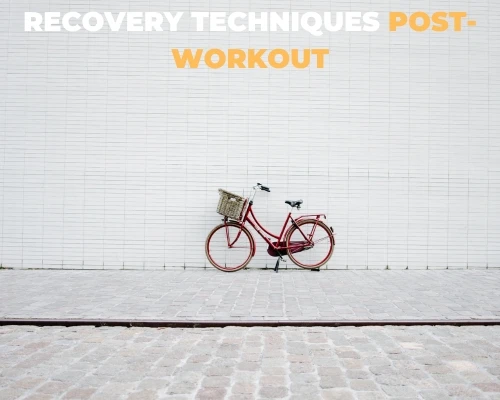Cyclist’s Home Workout [No Equipment Required!]
Stuck at home? Your bike misses the open road, and honestly, so do you.
We get it.
The gym feels like a distant memory, and those well-planned rides? On indefinite hold. But here’s a twist: you don’t need a gym or miles of trail to stay in top shape. No weights? No problem.
Think you need fancy equipment to maintain cycling fitness? Think again.
All you need is a little space and your determination. Whether it’s raining, too dark, or you’re just crunched for time, this workout slips right into your living room.
Do you believe in maintaining peak physical form, even off the saddle?
Do you have ten minutes?
Yes?
Then this no-equipment, cyclist-specific workout guide is your new best friend.
Cyclist’s Home Workout [No Equipments Required!]
Squats: Your Cycling Powerhouse
Squats are essential for cyclists. They build strength in your quadriceps, hamstrings, and glutes—key muscles for pedaling power. Not just strength, squats enhance flexibility and range of motion in your hips and knees. How to do them right? Stand feet shoulder-width apart. Squat as if sitting in a chair. Keep your back straight, chest up. Ensure knees don’t overshoot toes. Push back up and repeat for 10-15 reps. Consistency here translates directly to your riding stamina.
Lunges: Balance and Build
Lunges sharpen lower body strength and balance, targeting your quadriceps, hamstrings, and glutes. They mimic the cycling motion, enhancing on-bike stability. Start with feet hip-width apart. Step forward; lower until the front knee is bent at 90 degrees, back knee just off the ground. Push back up. Do 10-15 reps each leg. This not only builds muscle but improves your symmetry on the bike, preventing overuse injuries.
Push-Ups: Upper Body and Core Fortitude
Often overlooked by cyclists, upper body strength plays a crucial role in biking. Push-ups strengthen the chest, shoulders, and triceps while fortifying core stability. Start in a plank. Hands shoulder-width, lower until your chest grazes the ground. Keep a straight line from head to heels. Push back up. This exercise is pivotal for maintaining proper bike control during long rides and climbs.
Planks: Core Control Center
A strong core is vital for cycling efficiency. Planks work not only your abs but also the obliques and lower back, crucial for cycling posture and power. Begin in a push-up position, drop to your forearms. Hold 30-60 seconds, keeping your body straight. A robust core reduces fatigue, allowing you to ride longer and stronger.
Mountain Climbers: Cardio Boost
Mountain climbers are a high-intensity move to spike heart rate and build core strength. They enhance agility and coordination, key for navigating tricky terrains. Start in a plank; alternate knees to chest rapidly for 30-60 seconds. This exercise is excellent for off-season when you can’t hit the roads but need to keep your heart rate up.
Upper Body Exercises for Better Bike Handling

For cyclists, control and endurance aren’t just about leg power. Your upper body plays a crucial role. Strengthening your shoulders, back, chest, and arms is essential for better bike handling.
Exercises to Improve Upper Body Strength for Better Control and Endurance
- Shoulder Dips Perfect for targeting the shoulders and upper back, shoulder dips enhance stability. Using a dip stand, lower your body until your arms hit a 90-degree angle. Push up to start. Focus on the rhomboids and trapezius muscles. These are key for keeping your shoulders stable, which is vital during extended rides.
- Back Extensions To maintain a strong posture on long rides, back extensions are invaluable. Target the erector spinae muscles, responsible for a straight back during cycling. Strengthen these to improve posture and prevent lower back fatigue.
- Push-Ups Essential for overall upper body strength, push-ups enhance the chest, shoulders, and triceps. Start in a plank, lower to the floor, and push back up. Adjust hand positions from narrow to wide to challenge different muscle groups. This diversity in exercise helps adapt muscles for varied cycling demands.
Incorporating Dynamic Movements to Simulate Biking Actions
- Lateral Raises These are fantastic for shoulder strength and stability. Perform seated or standing, holding dumbbells. Raise arms to the side until parallel with the ground, then lower. This movement not only builds muscle but enhances your stability on the bike, crucial for handling and control.
- Dynamic Simulation Drills Mimic the actions of biking with dynamic drills. Use resistance bands to pull as if controlling handlebars, mimicking the resistance and movement. This develops muscle memory and strength in contexts similar to cycling, improving your responsiveness and endurance on actual rides.
Balancing Strength Training with Cycling
Balancing upper body workouts with your cycling schedule is critical. Avoid overloading the same day with both upper body workouts and intense cycling. Spread them across the week to ensure recovery and prevent performance dips. This strategy ensures ongoing improvement without risking overtraining, keeping your workouts effective and your rides enjoyable.
Flexibility and Mobility Routines

Stiff as a board after long rides? Not what you want, right?
Stretching—often skipped but oh-so-crucial.
Stretching: Not Just an Afterthought
Legs, Hips, Shoulders These are your bread and butter as a cyclist. Focus here to avoid tightness. Hip flexors, hamstrings, calves—stretch them out after every ride. It helps maintain flexibility and prevent injuries.
Dynamic Stretches: Get Moving Think bodyweight squats, glute bridges. These aren’t just stretches; they’re movements. They boost your flexibility. They make you mobile. They prep you for that saddle time without the pain.
Key Poses: Yoga for Cyclists Downward facing dog, calf stretches, expanded leg pose. Do these regularly. They enhance flexibility and can seriously boost your performance.
Why Flex Matters
Avoid the Hurt Flexibility isn’t just about reaching your toes. It’s about keeping injuries at bay. Good flexibility means you can ride longer, harder, and stronger. Think about the aerodynamic positions you want to hold. Without flexibility, you can’t sustain them.
Performance Gains Flexible muscles are powerful muscles. They allow you to pedal with more force and less effort. And that means faster, more efficient rides. Adjust your riding position easily, ride comfortably, and say goodbye to unnecessary fatigue.
Balance It Out Cycling is great, but it’s not complete. Work on your mobility off the bike too. Sideways movements are key. They keep you balanced. They prevent muscle imbalances that lead to injuries.
Recovery Techniques Post-Workout

Just crushed that home workout? Great. Now, let’s make sure you recover right.
Cooling Down After a Vigorous Home Workout
- Why Cool Down? Don’t just stop; cool down. It’s crucial. Helps bring your heart rate down, prevents blood pooling, and reduces injury risk. Stress relief? Check. Injury prevention? Check.
- Best Practices
- Breathing and Stretching Take five to six minutes, no less. Focus on controlled breathing. Stretch those major muscle groups you just worked. This helps ease muscle tension, boosts blood flow, and gets oxygen and nutrients moving to where they’re needed most.
- Self-Assessment How do you feel right after your workout? Overdid it? Or just right? Remember, you want to feel challenged, not wrecked. This balance is key to your fitness journey.
Foam Rolling and Stretching Techniques for Recovery
- Myofascial Release Grab that foam roller. Use it before and after workouts. It’s good for your muscles, helping with recovery and reducing stiffness. Think of it as a mini-massage for your muscles.
- Stretching It’s not just for warm-ups. Stretch after workouts too. This can reduce stiffness and prevent injuries. Combine active or dynamic stretches before and static stretches after. This combo helps you get the most from your recovery time.
- Active Recovery Take it easy on your rest days. Light activities like walking or easy cycling help a lot. They keep the blood flowing, helping with nutrient transport and recovery. This approach helps clear out lactic acid and boosts overall circulation.
Building a Weekly Workout Plan
Got goals? Great. Let’s build a weekly workout plan that keeps you moving toward them without burning out. Here’s how to mix things up and keep it balanced.
Incorporating Various Workouts into a Weekly Schedule
Consistency is Key Set a schedule. Stick to it. Include one full rest day and two active recovery days. Regularity is your friend.
Active Recovery Twice a week, go easy. Pick activities like yoga, foam rolling, or a swim. Keep it light, keep it moving.
Mix It Up Don’t get stuck in a rut. Vary your workouts. Address your weak spots, strengthen your strong suits.
Diverse Exercises Your body loves variety. Mix cardio, strength, and flexibility training throughout the week.
Intensity Levels Some days, go hard. Other days? Not so much. Include sessions like HIIT to challenge yourself, interspersed with lighter workouts.
All-Around Motion Move in different ways. Add lateral and rotational exercises to improve overall stability and mobility.
Listen to Your Body How are you feeling? Adjust your plan based on your body’s responses. Tired? Scale back. Energized? Push a bit.
Balancing Intensity and Recovery for Optimal Performance
Cardio Days Aim for two days of high-intensity cardio. Choose activities like spinning or fast walking. Burn calories, boost recovery.
Strength Training Hit the weights three times a week. Build muscle, enhance metabolism. Tailor your routine to your fitness level and goals.
Rest and Recovery Give yourself time to rest. Space out those high-intensity days to prevent injury and burnout.
Core and More On strength days, add Pilates for core strength. This enhances stability and performance.
Flexibility Focus On cardio days, stretch it out. Yoga can increase flexibility and aid muscle recovery.
Smart Strength Sessions Begin with compound movements like squats or bench presses. These work multiple muscle groups at once.
Isolation Exercises Later in your session, focus on isolation moves. Think biceps curls or tricep extensions, especially as you tire.
Test Yourself Regularly check your progress with a plank test or similar. See how your strength and stamina stack up.
As an Amazon Associate, I earn from qualifying purchases, at no additional cost to you. Read Our Affiliate Disclosure.

![Cyclist’s Home Workout [No Equipments Required!]](https://trikeadviser.com/wp-content/uploads/2024/04/Cyclists-Home-Workout-No-Equipment_s-Required-1024x683.webp)